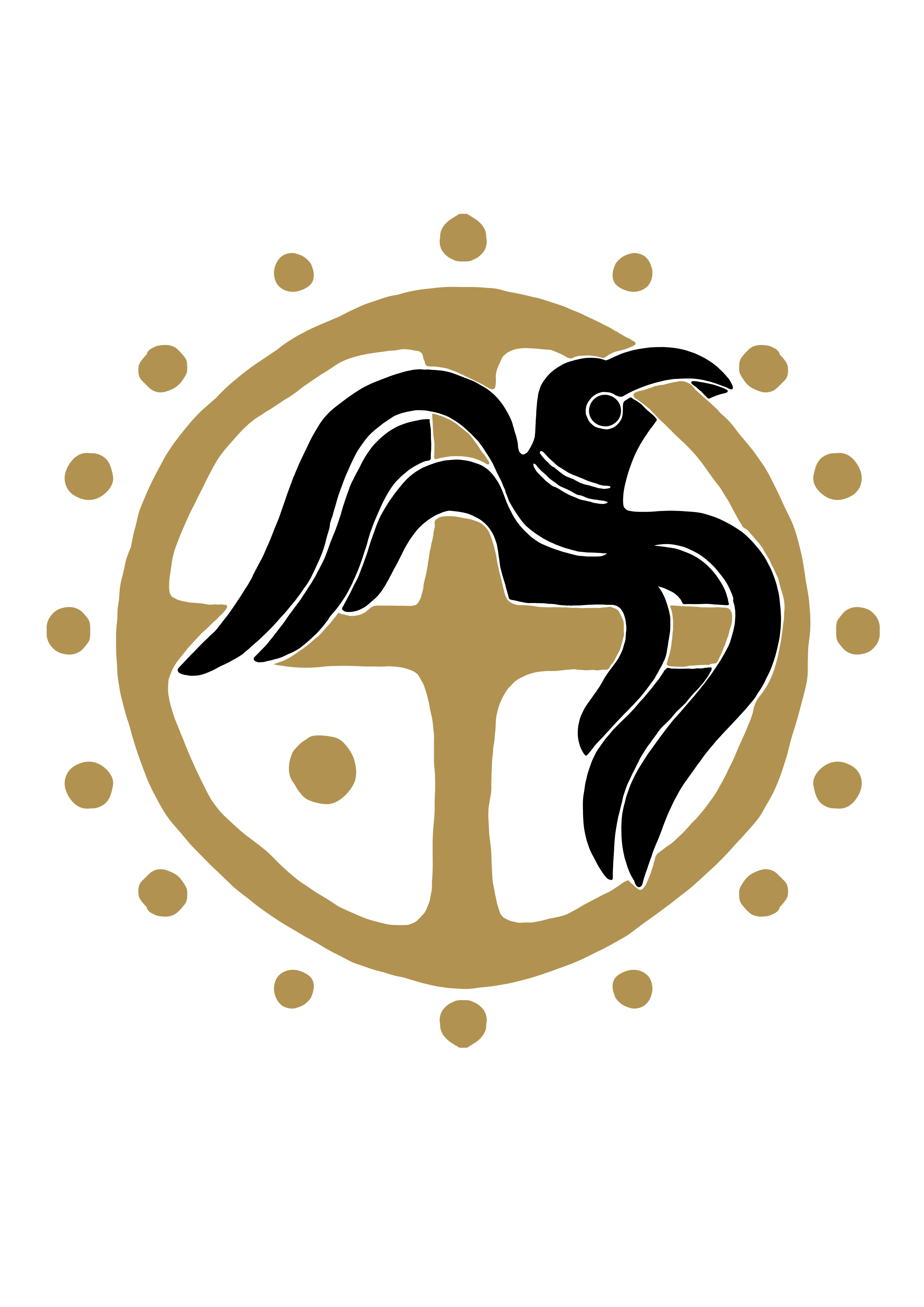Handmade Great Mother Goddess, First Gods of Old Europe, Neolithic Terracotta Replica
Prehistoric Great Mother Goddess Idol
Handmade and unique figurine typical of Danube culture.
Many scholars believe this idol represents a tattooed or ritually painted body of the Goddess with Ochre*.
Inspiration: Danube culture goddess
Size: 13 cm
Material: Fired Clay, Terracotta
Other Common Names: Neolithic Venus, Great Mother Goddess
PAGAN ROOTS: Old Europe Mother Goddess with Tattooed or Painted body
This artwork is unique and 100% handmade. The patina closely resembles the original patina of Prehistoric Mother Goddess figurines found in museums. A collector's item, this piece comes from Z-rune Pagan Arts Workshop and can be used as an altar piece.
The Cucuteni–Trypillia culture (Romanian: Cultura Cucuteni and Ukrainian: Трипільська культура), also known as the Tripolye culture (Russian: Трипольская культура), is a Neolithic–Eneolithic archaeological culture (c. 5500 to 2750 BCE) of Eastern Europe.
Three Chalcolithic ceramic vessels (from left to right): a bowl on a stand, a vessel on a stand, and an amphora, ca. 4300–4000 BC; from Scânteia, Romania, displayed at the Moldavia National Museum Complex.
Chalcolithic cultures of Southeastern Europe, with major archaeological sites (including typesites), extended from the Carpathian Mountains to the Dniester and Dnieper regions, centered on modern-day Moldova and covering substantial parts of western Ukraine and northeastern Romania, encompassing an area of 350,000 km² (140,000 sq mi), with a diameter of 500 km (300 mi; roughly from Kyiv in the northeast to Brașov in the southwest).
The majority of Cucuteni–Trypillia settlements consisted of high-density, small settlements (spaced 3 to 4 kilometers apart), concentrated mainly in the Siret, Prut, and Dniester river valleys.
During its middle phase (c. 4000 to 3500 BCE), populations belonging to the Cucuteni–Trypillia culture built the largest settlements in Neolithic Europe, some containing as many as three thousand structures and possibly inhabited by 20,000 to 46,000 people.
One of the most notable aspects of this culture was the periodic destruction of settlements, with each single-habitation site having a lifetime of roughly 60 to 80 years. The purpose of burning these settlements is a subject of debate among scholars; some settlements were reconstructed several times on top of earlier habitation levels, preserving the shape and orientation of the older buildings. One particular location, the Poduri site in Romania, revealed thirteen habitation levels constructed on top of each other over many years.
Tags: Old Europe Gods, Prehistoric Gods, Palaeolithic Art, Norse Gods, Norse Pagan Altar, Wiccan Gods, First European Gods, Mother Goddess, Terracotta, Prehistoric Ceramic Figurine
#MotherGoddess #Terracotta #Figurine #Sale #Offer #OldGods #AltarIdol
The term "Danubian culture" was coined to describe the first agrarian society in central and eastern Europe. This prehistoric culture, found along the banks of the Danube River, was once the largest civilization in Europe. The people who lived in the Lower Danube Valley and the Balkan foothills were ahead of their time in art, technology, and long-distance trade.
Ochre in Prehistoric World
Yellow and red ochre pigments were used in prehistoric and ancient times by many civilizations on different continents. Evidence of the processing of ochre has been dated by archaeologists to 300,000 years ago in Africa and Europe, 50,000 years ago in Australia, and 40,000 years ago in Asia.
Pieces of ochre engraved with abstract designs have been found at the site of Blombos Cave in South Africa, dated to around 75,000 years ago. In Wales, the paleolithic burial called the Red Lady of Paviland, coated in red ochre, has been dated to around 33,000 years ago. Paintings of animals made with red and yellow ochre pigments have been found at paleolithic sites like Pech Merle in France (ca. 25,000 years old) and Altamira in Spain (ca. 16,500–15,000 BC). The cave of Lascaux has an image of a horse colored with yellow ochre estimated to be 17,300 years old. Neolithic burials may have used red ochre pigments symbolically, either to represent a return to the earth or as a form of ritual rebirth, symbolizing blood and a hypothesized Great Goddess.
The use of ochre was intensive: it is not unusual to find layers of the cave floor impregnated with a purplish red to a depth of eight inches. The size of these ochre deposits raises questions yet unsolved. The coloring is so intense that practically all the loose ground seems to consist of ochre. It is imaginable that the Aurignacians regularly painted their bodies red, dyed their animal skins, coated their weapons, and sprinkled the ground of their dwellings. A paste of ochre was likely used for decorative purposes in every phase of their domestic life. This extensive use of ochre is supported by veritable mines of ochre found in some habitations.
— Leroi-Gourhan, A. (1968). The Art of Prehistoric Man in Western Europe. London: Thames & Hudson, p. 40.
The Ancient Picts were said to paint themselves "Iron Red," according to the Gothic historian Jordanes. Frequent references in Irish myth to "red men" (Gaelic: Fer Dearg) suggest that such a practice was common among the Celts of the British Isles, with bog iron being particularly abundant in the midlands of Ireland.
Ochre has uses beyond paint: "tribal peoples alive today . . . use it to treat animal skins, as an insect repellent, to staunch bleeding, or as protection from the sun. Ochre may have been the first medicament."

